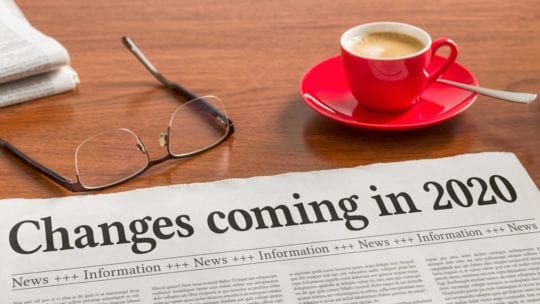
The speed with which the new coronavirus pandemic swept the world created a new normal in a matter of days that’s radically changed nearly every aspect of our personal and professional lives. During this time of disruption, it’s important to take a moment to retool.
“I think a lot of times, we’re all running so fast and furiously with our projects, and our clients, and the organizations that we’re working with, we always say things like, ‘Oh, yeah, I’m going to need to revisit those materials at some point, and make some updates, and we never do it,” says Kelly Stepno, APCO Worldwide’s Washington, D.C. practice lead.
If there are existing toolkits, websites, FAQs, fact sheets or any other materials that haven’t been recently updated, now is the time to take another look. Some of these things may not fit in a post-COVID-19 world.
“Some of that is going to be very tone-deaf...and it’s going to be important to think about what we should leave up and what we should keep out,” says Stepno.
Planning Ahead and Moving Forward
PR needs to take an especially close look at campaigns, says Erika Cruz, a planning director with Edelman. Getting your plans for 2020 back on solid ground depends on it.
“Communicators should be reviewing campaigns. I hope they already kicked off discussions on how plans will need to change and adapt,” she says. “Don’t wait. Engage in the conversations now. Reviewing and adapting campaigns is a must at this time.”
Another thing communicators, especially those who are particularly data-driven, should remember is that they’re often sitting on troves of data that can help them realign their work. That information can offer important insight into how to move forward. Stepno says that insights that didn’t hold water before could be indispensable now.
“It’s a good moment to be able to take a step back and see whether [data from past reporting] tells us anything about the stakeholders we may not be engaging with right now,” she says, pointing to the fact that stakeholders may have changed. Additionally, many roles within the PR landscape have evolved.
Plans “certainly may change after thinking about what engagement with stakeholders currently looks like, what it should look like and what evolutions should be made on the basis of what we’re seeing in how people are sharing information, where people are [finding] information,” she says.
One of the most important, and in many cases, most in flux, groups are your media contacts. Cruz warns that a complete overhaul or cleaning up media lists may not be the best move since there is so much uncertainty.
“There are publications ceasing operations or furloughing journalists, and at the same time new podcasts and blogs are coming up,” she says. “Keep track of media movements, but don’t invest too much time in updating your media list. Instead, invest your time in identifying new voices and new formats,” she advises.
However, it’s important to remember that each one of our situations is different and some housekeeping tasks may not be a good fit for everyone.
“The truth is there’s no formula,” Cruz says. “Each one of us will have to decide what is most important to prioritize. However, if I can give one piece of advice, it would be: listen. Listen to people, to brands. Learn how they react, what they need, and based on that, prepare for what comes next.”
